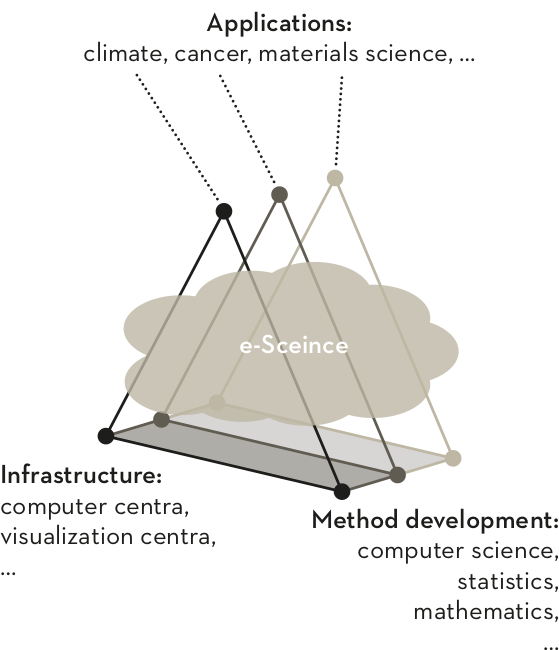3-pillar model
The work in SeRC relies on three pillars of existing excellence in application areas, method development, and e-infrastructure, connected through a “human e-cloud”.
Pillar 1 – application areas
It’s a central goal for SeRC to have direct impact in application areas of strategic relevance for our partner universities, and conversely we want to focus on topics where SeRC has world-leading research groups. In particular, this includes fields such as computational fluid dynamics, materials science, bioinformatics, molecular simulation, climate modeling, and cancer epidemiology and screening.
Pillar 2 – e-infrastructure
We want to facilitate the development of a world-class computational infrastructure at PDC, NSC, and the visualisation centres. This includes competitive hardware investments in collaboration with The Swedish National Infrastructure for Computing (SNIC), but it’s equally important to recruit advanced infrastructure experts to build a culture of international expertise, excellence, and infrastructure collaborations targeting development of key codes rather than merely providing user support.
Pillar 3 – core e-Science and method development
An integral part of SeRC is leading-edge research in core e-Science and method development, for instance in fields such as numerical analysis, visualisation, parallelisation, acceleration, and data engineering. The core research groups contribute both with the latest research results on e-Science tools as well as a broad competence base in e-Science tool usage and methodology.
e-Science experts
For SeRC, the central challenge is to get these three pillars to strengthen and support each other through collaborations. Infrastructure and core e-Science do not exist in vacuum, but should engage directly in important application research, and at the same time SeRC only supports application areas where we see an opportunity to translate advances in fundamental e-Science into research impact.
Our primary tool to achieve this is the recruitment of e-Science experts that work cross-disciplinary between these areas, what we have designated as a ”human e-cloud”. These experts combine a deep knowledge of the application area with expertise either in method development or large-scale computational infrastructure. By integrating these e-Science experts into the research environments, there is also new opportunities for close collaborations between experts facing similar challenges (for instance in parallelisation, data management or method development) in different application areas.





